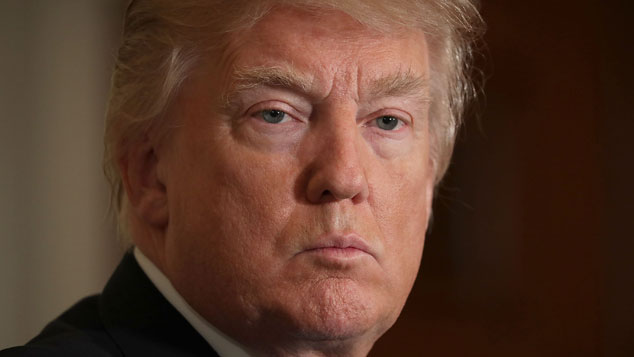
Donald Trump is nothing if not a fast learner.
He’s not had the smoothest of starts as US president. The early focus on repealing “Obamacare” means he’ll have little to show for his first 100 days in office (which seems to be some sort of unofficial judgement point for US presidents).
But he’s figured out a couple of key rules of modern statesmanship.
Number one: if you’re struggling at home, bomb something abroad.
And number two: if your party can’t agree on how to stimulate the economy – well, that’s what the Federal Reserve is there for…
There are lots of logical reasons for the US dollar to rise
Donald Trump gave an interview to the Wall Street Journal yesterday. In the process, he managed to issue the following “humble brag” – one that moved the markets significantly.
“I think our dollar is getting too strong, and partially that’s my fault, because people have confidence in me.”
Amusingly, in the same interview, he backed down from his talk of labelling China a “currency manipulator”. All things considered, that was probably wise, given that he had just talked the dollar index sharply lower.
The US has generally pretended to have a strong dollar policy in the past. I say pretended, because for much of the time, the dollar has been anything but strong.
But it’s one thing to have a benign “nudge, nudge, wink, wink” disregard for the value of the currency. Making the shift towards actively talking it down is quite a change.
Will it make much difference? Well, he’s certainly fighting against the tide. Logic still suggests to most people that the only way for the dollar is up.
Let’s count the reasons. Firstly, the US economy is healthier than most other economies in the world. Secondly, the Federal Reserve is already raising rates, which you can’t say for the Bank of England, the European Central Bank, or the Bank of Japan. Thirdly, if the US economy continues to be healthy, then the Fed should presumably continue to raise rates. Fourthly, if Trump’s promises to ‘stimulate’ the economy are realised, the Fed should be raising rates even faster.
So you can see why there’s still a sense that the dollar has to rise. As one investment strategist tells Bloomberg: “The path of least resistance should be a stronger dollar.”
And yet, there’s a problem here. It gets to the nub of why markets are such irrepressibly contrary beasts. Markets aren’t perfectly efficient (not in the way that academics propose), but anything that can be classed as “common knowledge” will be priced in pretty quickly. Earlier this year, for example, the “fact” that the dollar could only go up was priced into the market.
Since then, however, although the logical path of least resistance still seems to be higher, doubts are creeping in. And when the market goes from being 100% convinced that something is going to happen to only 90% convinced, then the price placed on that scenario will fall to reflect that.
A huge stimulus package is no longer a sure thing
So what doubts have crept in? For a start, Trump’s stimulus looks like it’s running into trouble. After the healthcare bust-up, it looks as though all the really juicy stuff – such as tax reform and the rest of it – will have to wait for longer than the markets expected. So that’s one mark against a strong dollar.
Also, Trump and Fed chair Janet Yellen don’t seem to be quite as hostile towards one another as perhaps many had expected. Trump might have criticised the Fed’s “easy money” policies before he became president, but now he’s in the hot seat, he quite likes them. In yesterday’s interview he also told the Wall Street Journal that he likes “a low interest rate policy”.
This shouldn’t really come as much of a surprise. If anyone is going to be an easy-money kind of guy, it’s going to be Trump. Few sectors of the economy relish low interest rates more than the real estate sector.
Moreover, if his economic stimulus plans are going to be delayed (or even scrapped) then his only real option is to do what governments have been doing for the past decade or more – delegate the job to the central bank.
Given the Fed’s general fondness for keeping monetary policy as loose as possible, and its tendency to fall in with the government of the day, Yellen probably doesn’t need telling twice.
On top of that, all of the major rivals to the dollar – the euro, the yen, even the pound – have been clawing back losses. The yen is performing its usual function as a “risk-off” currency, with traders fleeing there amid recent uncertainty. The euro is torn between fear of political upheaval and tentative signs of a widening economic recovery. And the pound is juddering along as the market continues to make up its mind about Brexit.
In short, “the only way is up” story for the dollar is no longer as convincing as it once seemed.
What does that mean? Hang on to gold, obviously. But another group that should benefit from a weaker dollar is emerging markets. Despite a strong performance since the start of last year, they’re still decent value, says David Rosenberg of Gluskin Sheff. And if talk of protectionism from Trump continues to fade into the background, sentiment should continue to improve too.